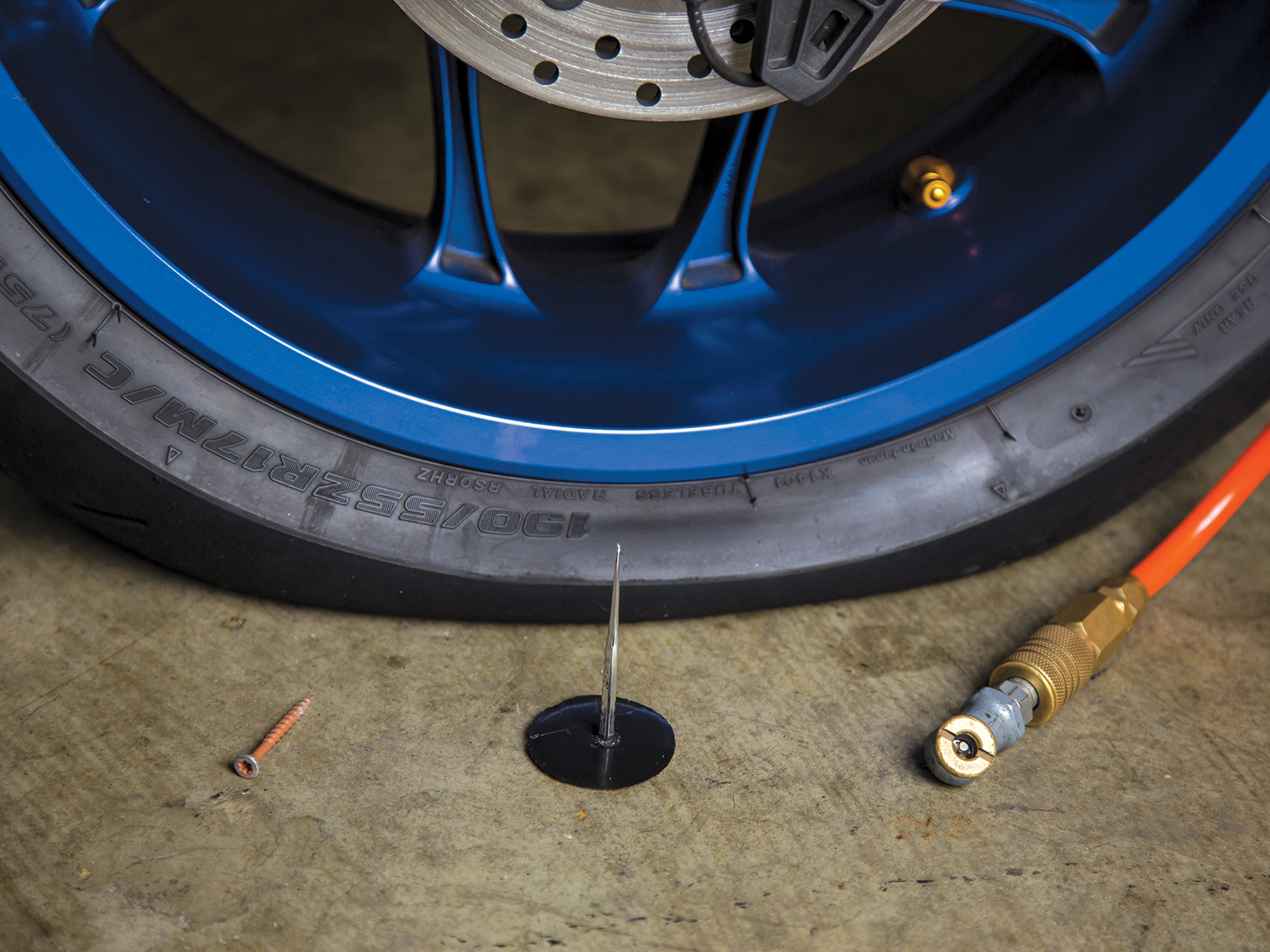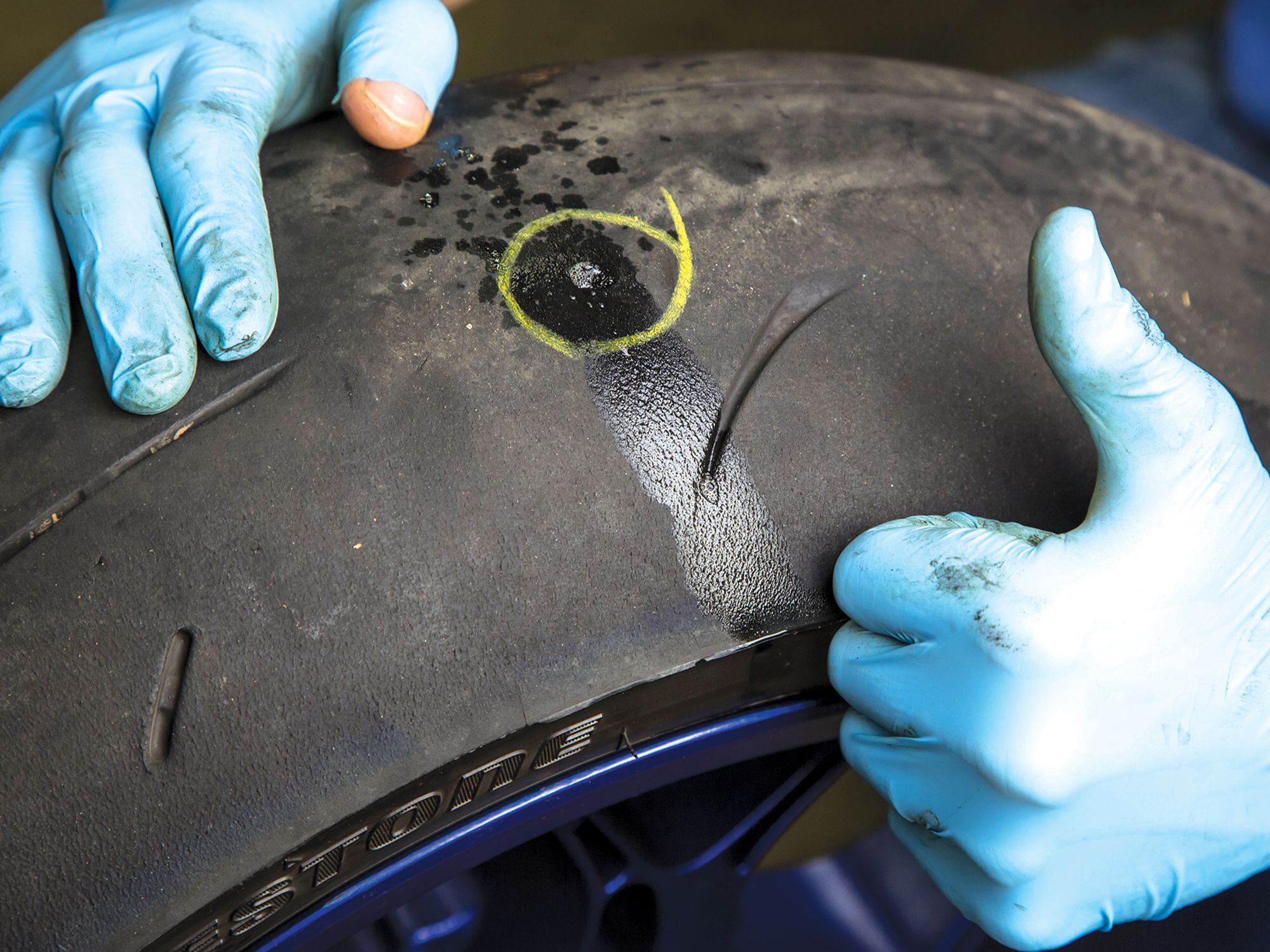Navigating the open road on a motorcycle is an exhilarating experience, a fusion of freedom, speed, and the thrill of adventure. However, this exhilarating experience is contingent upon the optimal performance of your motorcycle, and a crucial component of this performance is the condition of your tires. Tires, the sole points of contact between your bike and the road, play an indispensable role in handling, braking, and overall stability. Therefore, maintaining your motorcycle’s tires in top condition is paramount to ensuring a safe and enjoyable ride.

I. Introduction: The Importance of Motorcycle Tire Repair
A. The Role of Tires in Motorcycle Safety and Performance
Tires are the unsung heroes of motorcycle safety, silently working behind the scenes to provide traction, stability, and responsive handling. They are the first line of defense against hazards, absorbing bumps, potholes, and uneven road surfaces. Properly inflated and maintained tires ensure optimal braking performance, enabling you to stop quickly and safely when necessary. Neglecting tire maintenance, on the other hand, can have dire consequences.
B. The Consequences of Neglecting Tire Repair
Failing to address tire issues promptly can lead to a multitude of problems, ranging from minor inconveniences to life-threatening situations. A neglected puncture can quickly escalate into a complete blowout, leaving you stranded on the roadside and potentially causing a loss of control. Worn-out tread can significantly reduce traction, increasing the risk of skids and accidents, especially in wet or slippery conditions. Damaged sidewalls compromise the tire’s structural integrity, making it susceptible to sudden failures and potentially causing catastrophic accidents.
C. The Benefits of Prompt Tire Repair
Addressing tire problems promptly not only enhances safety but also prolongs the lifespan of your tires and saves you money in the long run. Timely repair of punctures prevents further damage to the tire and the inner tube, reducing the need for costly replacements. Maintaining proper tread depth optimizes tire performance, fuel efficiency, and overall riding experience. Addressing sidewall damage early on can prevent catastrophic failures and potentially save you from expensive motorcycle repairs.

II. Common Motorcycle Tire Problems and Their Signs
A. Punctures and Leaks: The Most Obvious Signs
The most obvious sign of a tire problem is a puncture, a hole or tear in the tire that allows air to escape. Punctures can be caused by sharp objects such as nails, screws, or glass shards. A telltale sign of a puncture is a sudden loss of tire pressure, often accompanied by a hissing sound. If you suspect a puncture, it’s crucial to stop riding immediately and inspect the tire carefully.
B. Tread Wear: Indicators of Tire Replacement
As tires wear down, their tread depth decreases, reducing traction and increasing the risk of skids and accidents. The minimum tread depth for motorcycle tires is typically 1.6 millimeters, but it’s advisable to replace tires before reaching this limit. A simple way to check tread depth is to use a tire tread gauge or insert a penny into the tread grooves. If the tread depth is less than the penny’s head, it’s time for new tires.
C. Sidewall Damage: A Cause for Immediate Concern
Sidewall damage is a serious issue that requires immediate attention. The sidewalls of tires are thinner and more vulnerable to damage than the tread area. Damage to the sidewalls can compromise the tire’s structural integrity, making it susceptible to sudden failures and potentially causing accidents. Signs of sidewall damage include bulges, cracks, cuts, or abrasions. If you notice any sidewall damage, stop riding immediately and seek professional tire repair or replacement.
D. Dry Rot and Cracking: Signs of Tire Aging
Over time, tires can deteriorate due to exposure to sunlight, heat, and weather conditions. This deterioration, known as dry rot, manifests as cracks in the tire’s surface, especially along the sidewalls. Dry rot weakens the tire’s structure and increases the risk of blowouts. If you notice signs of dry rot, it’s time to replace the tires, regardless of tread depth.
E. Uneven Wear: A Symptom of Alignment Issues
Uneven tread wear across the tire can indicate alignment problems with your motorcycle. This can be caused by improper suspension settings, worn-out suspension components, or misaligned wheels. Uneven wear not only reduces tire lifespan but also affects handling and stability, making the motorcycle feel twitchy or unstable. If you notice uneven tread wear, have your motorcycle inspected by a qualified mechanic to address the underlying alignment issue.

III. Essential Tools and Materials for Motorcycle Tire Repair
A. Tire Repair Kit: A Must-Have for On-the-Go Repairs
A tire repair kit is an essential tool for any motorcycle rider. It contains the necessary items to repair small punctures and leaks, allowing you to get back on the road quickly and safely. A typical tire repair kit includes a tire plug tool, tire plugs, a reamer, and a glue or cement. While a tire repair kit can be a lifesaver on the road, it’s important to note that these repairs are temporary solutions and shouldn’t be considered a permanent fix.
B. Tire Pressure Gauge: Ensuring Proper Inflation
Maintaining proper tire pressure is crucial for optimal performance, handling, and tire lifespan. A reliable tire pressure gauge allows you to regularly check and adjust your tire pressure according to the manufacturer’s recommendations, which can be found in your motorcycle’s owner’s manual or on a sticker located on the swingarm or near the fuel filler cap.
C. Tire Change Tools: Removing and Replacing Tires
If you’re comfortable changing your own tires, you’ll need a specific set of tools. This typically includes tire irons, a rim protector, and a valve stem remover. Tire irons are specialized levers used to pry the tire off the rim, while the rim protector helps prevent damage to the rim during the process. The valve stem remover allows you to remove the valve stem from the inner tube when replacing it.
D. Air Compressor: Inflating Tires to Correct Pressure
An air compressor is essential for inflating your tires to the correct pressure after repair or replacement. Portable air compressors are available for motorcycle riders who prefer to handle tire maintenance themselves. However, most gas stations also offer air pumps that can be used to inflate tires.
E. Safety Gear: Protecting Yourself During Repairs
When performing any type of tire repair or maintenance, it’s crucial to prioritize safety. Wear appropriate safety glasses to protect your eyes from flying debris or chemicals. Gloves will shield your hands from cuts and scrapes. Additionally, consider wearing sturdy footwear to prevent injuries if a heavy tool slips.

IV. Step-by-Step Guide to Repairing a Motorcycle Tire Puncture
A. Locating the Puncture: Finding the Source of the Leak
The first step in repairing a puncture is to locate the source of the leak. Inspect the tire carefully for any visible holes or tears. If you can’t find the puncture visually, you can immerse the tire in a bucket of water and look for bubbles forming around the leak. Once you’ve identified the puncture, mark it with a piece of chalk or a marker for easier reference.
B. Preparing the Tire: Removing Foreign Objects and Cleaning the Area
Before plugging the puncture, it’s essential to prepare the tire properly. Use a reamer tool to clean and roughen the area around the puncture, removing any debris or foreign objects lodged inside. Additionally, clean the surrounding area of the tire with a rag and rubbing alcohol to remove dirt and grime.
C. Inserting the Tire Plug: Sealing the Puncture with a Repair Kit
Following the instructions included with your tire repair kit, insert the tire plug tool into the reamed hole. The plug tool typically has a needle that feeds the tire plug into the puncture from the inside of the tire. Once the plug is inserted, pull the tool out, leaving the plug securely lodged in the hole.
D. Trimming the Excess Plug: Ensuring a Smooth Finish
Use a utility knife to trim off any excess plug material that protrudes from the outside of the tire. Ensure the trimmed plug sits flush with the tire surface for a smooth finish that won’t interfere with handling.
E. Inflating the Tire: Restoring Proper Air Pressure
Finally, use your air compressor or a tire pump to inflate the tire to the recommended pressure as specified in your motorcycle’s owner’s manual. Remember to check the pressure again after riding for a few miles, as the tire may lose some air pressure initially.

V. Assessing the Need for Tire Replacement
While a tire repair kit can address minor punctures, it’s not a substitute for a complete tire replacement when necessary. Here are some key factors to consider when deciding whether your tires need replacing:
A. Tread Depth: Checking for Minimum Tread Requirements
As mentioned earlier, the minimum legal tread depth for motorcycle tires is typically 1.6 millimeters. However, for optimal performance and safety, it’s recommended to replace tires before reaching this limit. Consult your motorcycle’s owner’s manual for specific recommendations on ideal tread depth for your bike.
B. Sidewall Damage: Evaluating the Extent of Damage
Any significant sidewall damage, such as deep cuts, bulges, or cracks, warrants immediate tire replacement. Sidewall damage compromises the structural integrity of the tire and poses a serious safety risk. Don’t attempt to repair extensive sidewall damage; prioritize your safety and get new tires installed by a qualified professional.
Leave a Reply